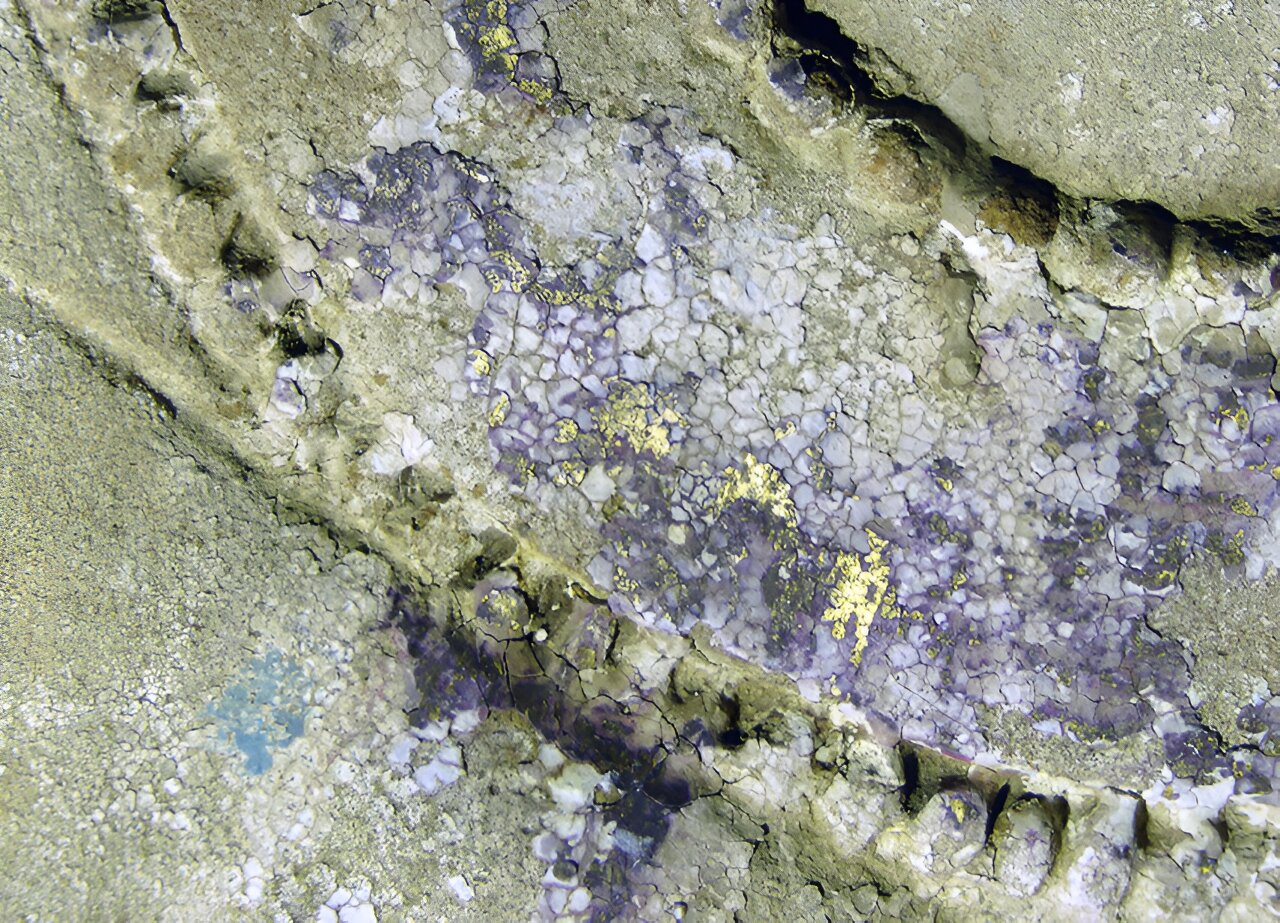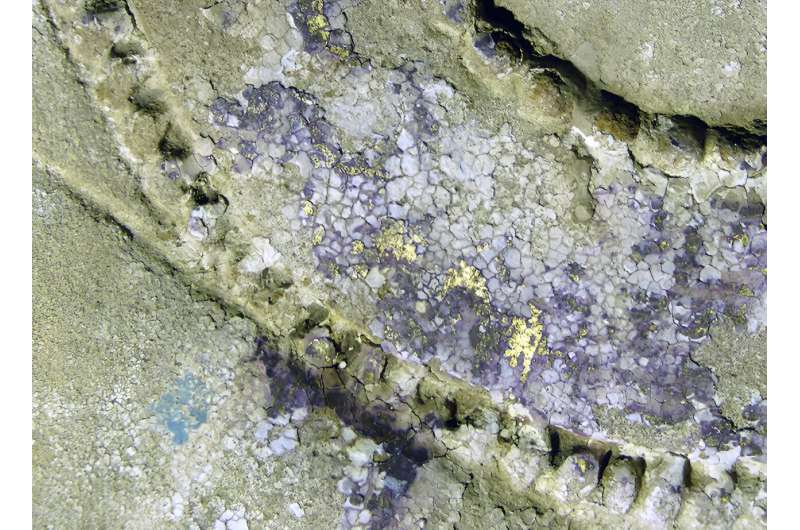

Egyptian temples were not only colorful, but also gleamed in glistening gold. Columns, gates and obelisks have been covered in gold since the beginning of the Pharaonic Period. Researchers also know from textual sources that some of the buildings were gilded. In most cases, these were overlays of thicker metal foils made of gilded copper. Their traces can only be seen today as holes in the walls.
Thin gold leaf decorations, however, are only rarely documented due to their great fragility. At Edfu, particles of this type of gilding have now been discovered in numerous places on the higher wall areas of the barque sanctuary.
In cooperation with the Egyptian Ministry of Tourism and Antiquities, a team from Julius-Maximilians-Universität (JMU) Würzburg has been researching the formerly colorful paintwork of the stone reliefs in the temple of Edfu, which was dedicated to the falcon god Horus. The reliefs and paintings were cleaned and consolidated by an Egyptian team of conservators under the direction of Ahmed Abdel Naby.
“The gilding of the figures presumably not only served to symbolically immortalize and deify them, but also contributed to the mystical aura of the room. It must have been very impressive, especially when the sunlight was shining in,” says Dr. Victoria Altmann-Wendling, project manager and research fellow in the Horus Beḥedety Project at JMU.
Painters corrected faulty hieroglyphics
The Egyptian restorers removed dust, bird droppings and other deposits, such as soot, from the sandstone reliefs. In the process, the researchers uncovered the remains of the paintwork that once covered the entire reliefs. In most ancient Egyptian temples, painting is not preserved at all, or only in a few (interior) areas. The work in the temple’s barque sanctuary was completed this spring. Further analyses of the pigments and the gilding are planned.
The multi-colored paintings can now provide further details of the scenes and hieroglyphs that could not be identified in the relief alone, e.g., elements of the clothing or the offerings. The craftsmen also used color to correct the hieroglyphs carved in stone.
“In the painting, we are capturing an ancient quality management,” says Professor Martin A. Stadler, director of the Horus Beḥedety Project Würzburg.
“The fact that the gods were completely gilded is particularly interesting. We find this in the textual sources that describe the flesh of the gods as consisting of gold,” adds Dr. Altmann-Wendling.
Graffiti painted in ink
Another result is the discovery of dipinti (i.e. graffiti painted in ink) written in the Demotic script. These writings are direct testimony of the priests entering the temple.
Such personal inscriptions are known primarily from outer temple areas or doorways and not from the sanctuary or “holy of holies,” where the barque and statue of the worshiped god were located. The prayers addressed to Horus, referred to as proskynemata in scientific terminology, thus provide new insights into the “spatial biography” of the room, as well as the beliefs and cult practices of the priests responsible.
Facts about the temple of Edfu
In addition to being the best-preserved sanctuary in Egypt, the temple of Horus at Edfu is a marvel of ancient structural design, with a length of 137 meters, a width of 76 meters at the pylon, and heights ranging from 15 meters to 35 meters. With such grand proportions and its wall surfaces completely covered with inscriptions and pictorial reliefs, it also stands as a unique monument of ancient religion and architecture.
Built and decorated between 237 and 57 BC, under the reigns of Kings Ptolemy III-XII, it contains more religious texts and ritual scenes than almost any other Egyptian temple, some of which can be traced back to the third millennium BC.
Provided by
Julius-Maximilians-Universität Würzburg
Citation:
Restoration in the temple of Edfu reveals new inscriptions, paint, and gold (2024, September 16)
retrieved 16 September 2024
from https://phys.org/news/2024-09-temple-edfu-reveals-inscriptions-gold.html
This document is subject to copyright. Apart from any fair dealing for the purpose of private study or research, no
part may be reproduced without the written permission. The content is provided for information purposes only.